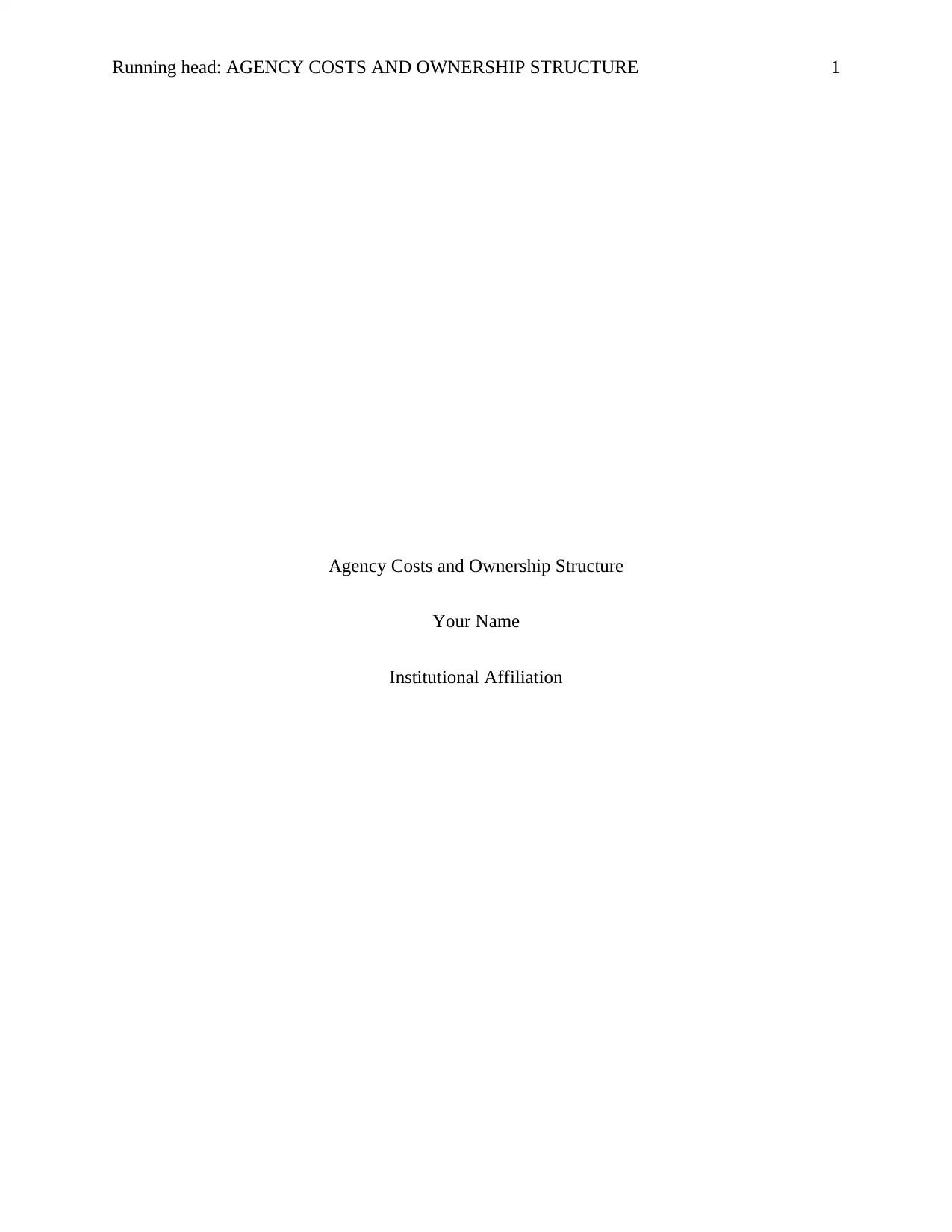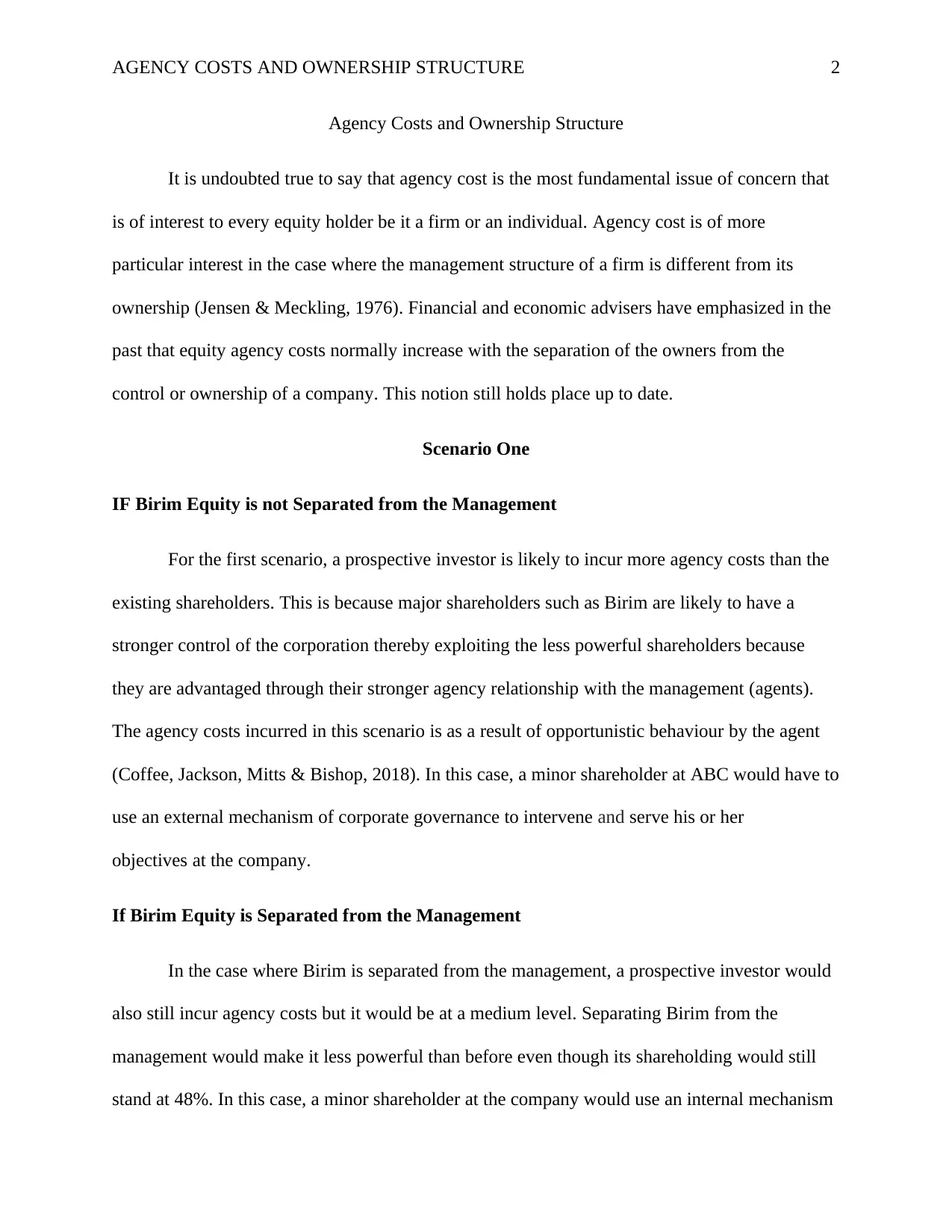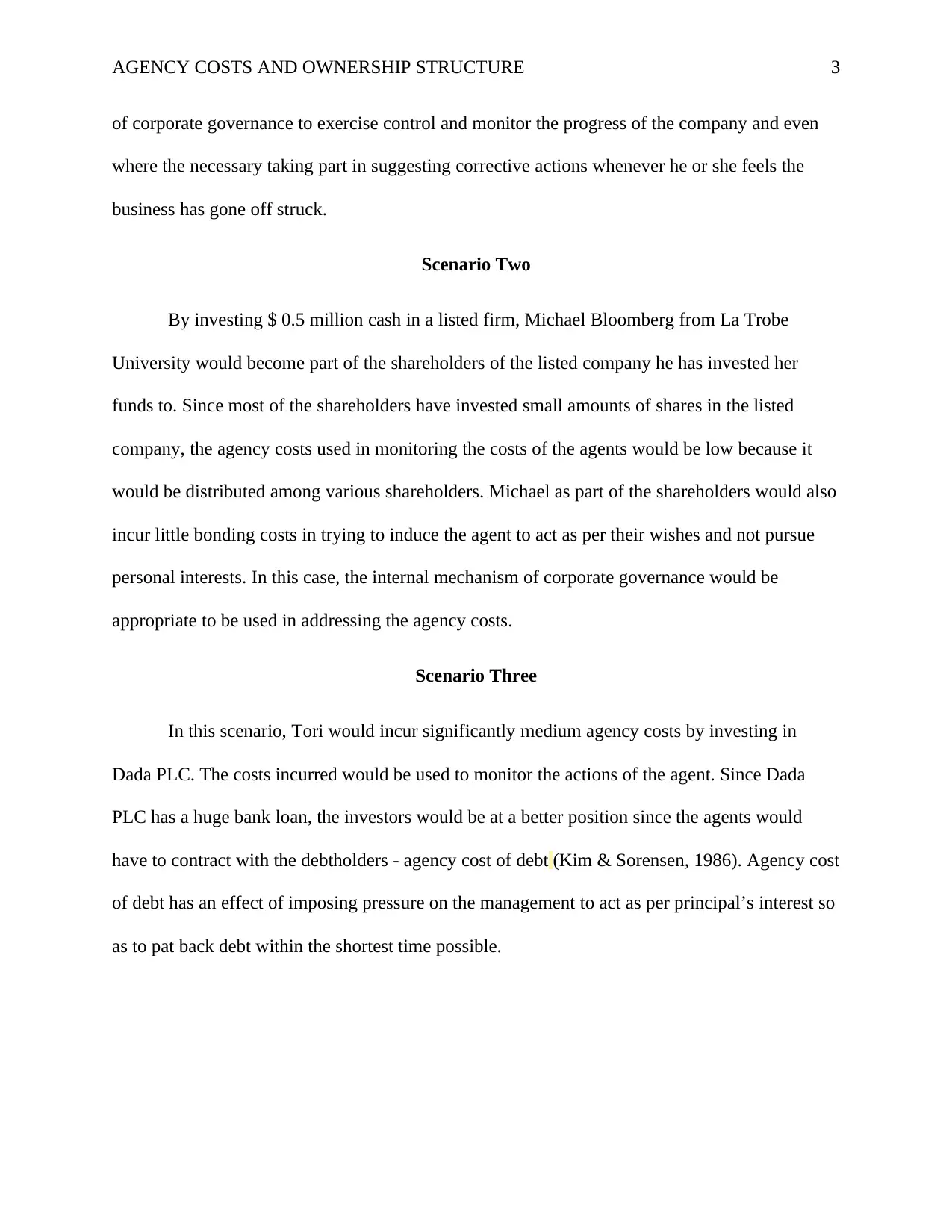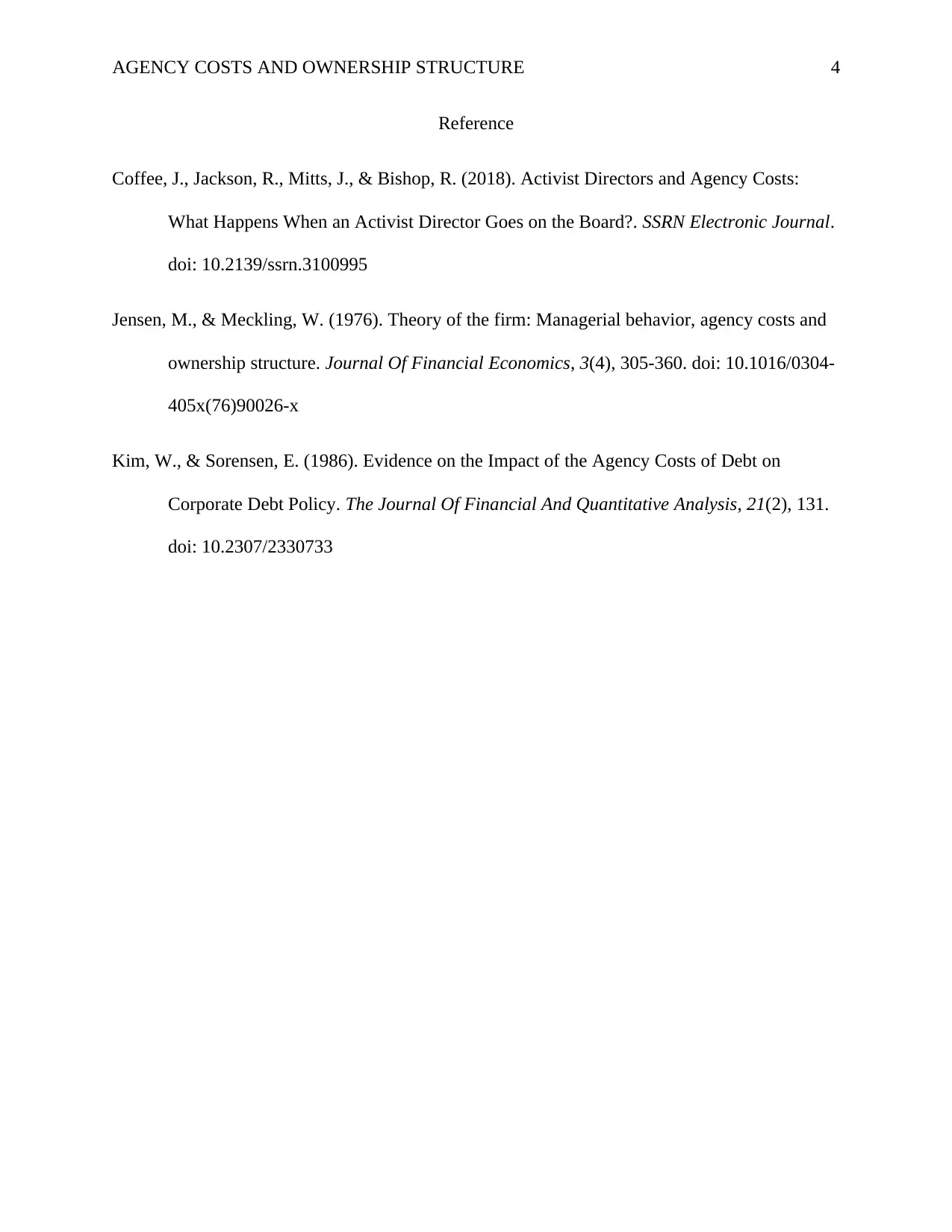Exploring Agency Costs and Ownership Structure in Corporate Finance
VerifiedAdded on 2023/06/05
|4
|751
|444
Report
AI Summary
This report delves into the complexities of agency costs and ownership structure, particularly focusing on the scenarios where management and ownership are either separated or combined. It highlights how agency costs, a fundamental concern for equity holders, are influenced by the alignment or misalignment of interests between agents (managers) and principals (owners). The analysis covers different investment scenarios, such as prospective investors dealing with major shareholders like Birim Equity, Michael Bloomberg's investment in a listed firm, and Tori's investment in Dada PLC, each presenting unique agency cost dynamics. The report emphasizes the role of both internal and external mechanisms of corporate governance in mitigating these costs, referencing established research on agency theory and the impact of debt on managerial behavior, concluding that effective corporate governance and strategic debt management can help align managerial actions with shareholder interests.
1 out of 4










![[object Object]](/_next/static/media/star-bottom.7253800d.svg)